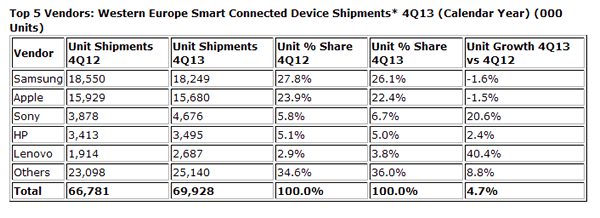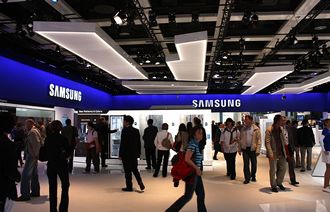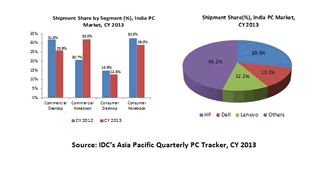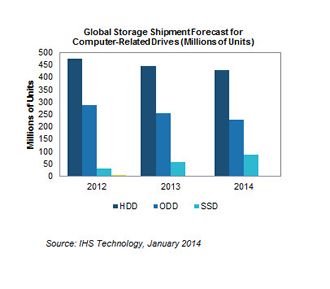 230 million smart connected devices – a term including smartphones, PCs and tablets – shipped in 2013 in Europe.
230 million smart connected devices – a term including smartphones, PCs and tablets – shipped in 2013 in Europe.
That’s according to a report from IDC today, which said that although growth was slightly down compared to 2012, the market continues to be one of the fastest growing IT sectors.
Tablets, particularly, will drive the sector during this year – shipments in Europe are likely to grow by 17.6 percent. 45 million units sold in Western Europe in 2013 – that’s a growth of 51.4 percent oer the previous year. IDC thinks tablets will continue to show strong growth over the next three years.
The news is far gloomier for PCs – the market for consumer devices fell by 2.4 percent in Q4 2013. Enterprise sales, hwever, grew by 3.5 percent.
Smartphones are the undoubted king of the connected castle though. IDC said that they hogged 55 percent of the the sector, with 38 million units shipping in Q4 2013.
Here is the breakdown of the market leaders in the sector, according to IDC.



















